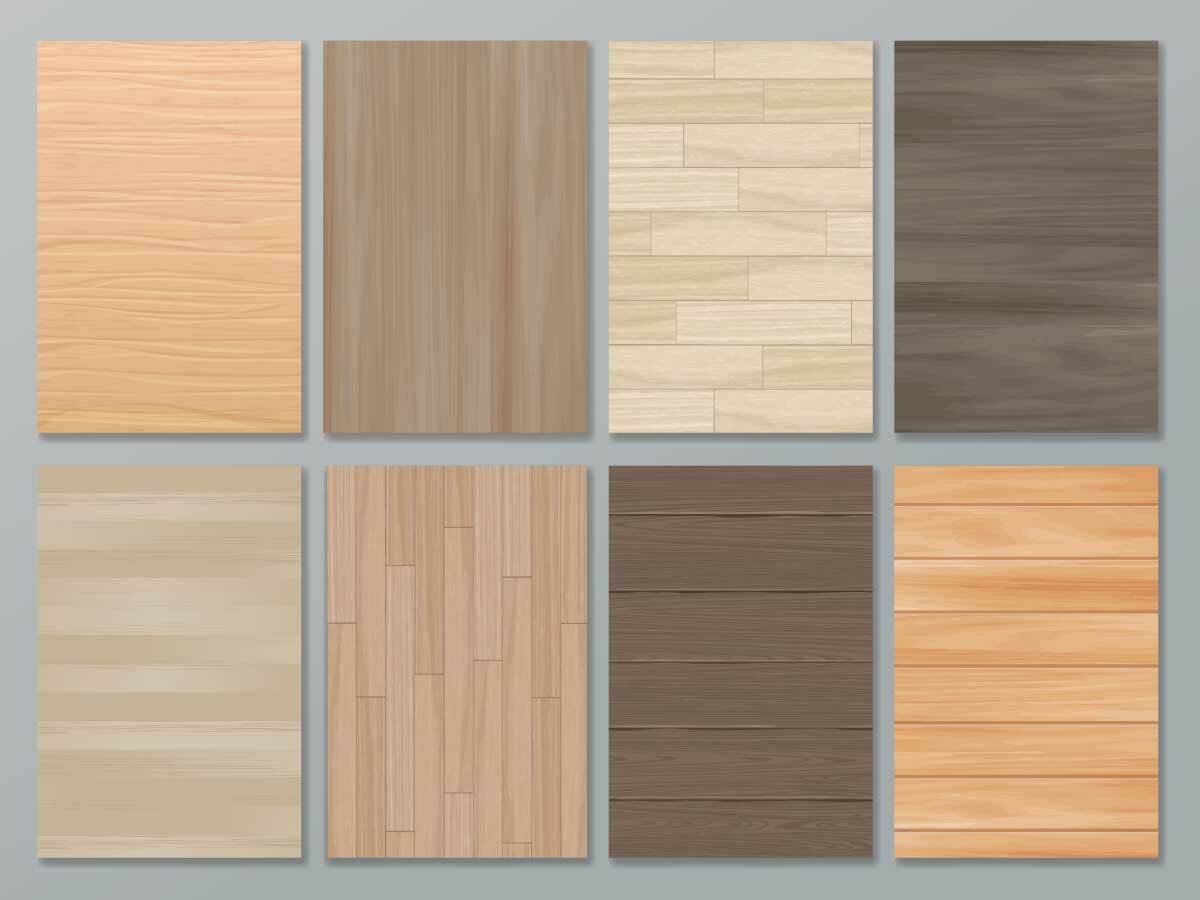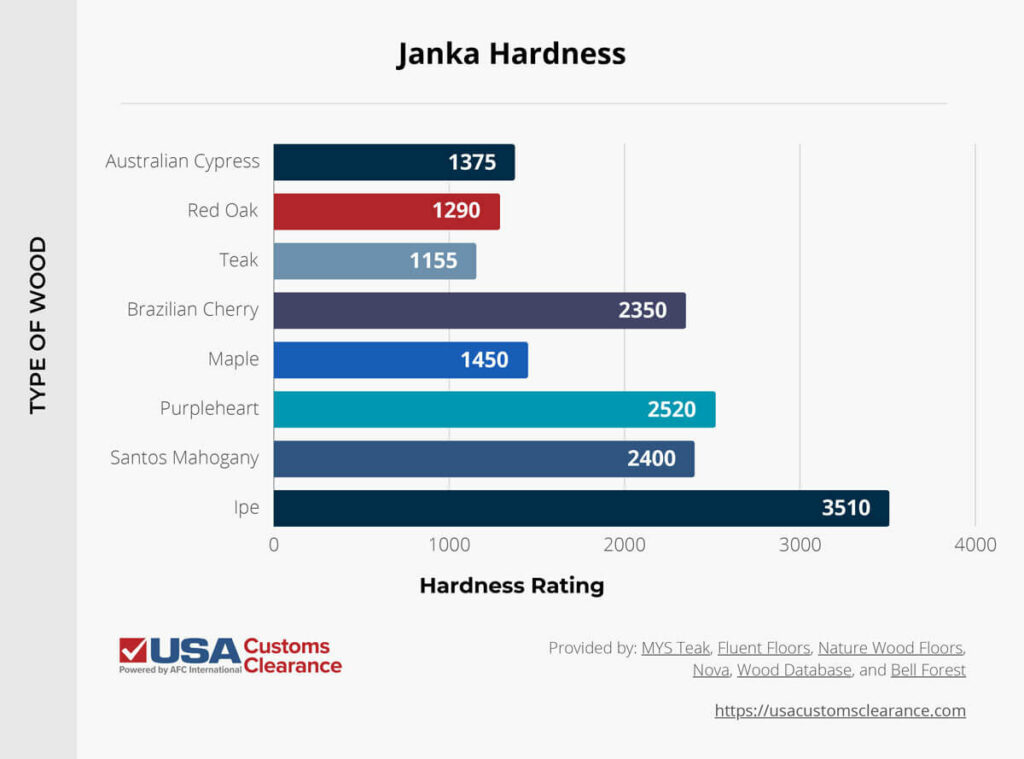
Exotic hardwoods are becoming a valuable import as the popularity of this flooring grows amongst homeowners. To meet the demands of buyers in the U.S., you’ll need to make sure you follow all the correct importation requirements.
Key takeaways:
We’re going to use the experience and knowledge of USA Customs Clearance’s import specialists to explain what regulations you need to follow.
If you’re looking to import exotic hardwood floors into the USA for commercial sale, there are a few documents you’re going to need. Having the right paperwork will ensure you comply with all the applicable wood importing regulations.
The Animal and Plant Health Inspection Service (APHIS), overseen by the U.S. Department of Agriculture (USDA), is in charge of making sure imported wood is compliant with phytosanitary regulations.
Being “phytosanitary” means that the imported product is free from any bugs or diseases that could spread and harm other plants once it crosses through the American port of entry. APHIS requires that all wood being imported must be treated to decrease moisture, and eliminate the threat of pests, disease, rot, and mold.
Since hardwood is classified as lumber, it can be treated in one of three ways.
After your lumber has received heat or kiln dried (KD) treatment, your shipment will need a permanent marking on each piece of exotic hardwood. If you don’t want to mark each piece of lumber, you can instead mark the packaging that will be carrying your shipment.
You must acquire a Timber and Timber Products Import Permit to send with the shipment. In order to get this permit, you have to submit the PPQ Form 585 to the APHIS Permit Services address printed on the form. Make sure you do this in advance, since it takes roughly 30 days to receive the permit.
Prior to shipment, you will need to submit a Bill of Lading (BOL) to the customs agent at the intended port of entry. A Bill of Lading serves as a receipt for the items you’re importing, including the number, quality, and condition of the items.
The Lacey Act was amended in 2008, in an effort to prevent the trafficking of illegally acquired wildlife, plants, and plant products. Exotic woods are especially notorious for being sourced unethically or illegally.
Most importers file their Lacey Act Declarations form into Customs and Border Protection’s (CBP) prior to their import’s arrival. You can also submit Lacey Act declarations at the time of Cargo Release or when filing the Entry Summary 7501 into ACE.
You can submit Lacey Act Declarations a few different ways:
If you want to submit a paper declaration, you can fill out a PPQ Form 505. You can do this by accessing the PDF of the form and filling it out in the browser. Once you’re done, you can save the completed form as a new PDF and print it.
You’ll need to mail the document to the USDA using the address listed on the form. A copy should be available for the CBP to review when the document enters the country.
The best way to submit an electronic Lacey Act declaration is through ACE. This portal connects CBP, trade representatives, and partner government agencies (PGA) like USDA. When completing the declaration, there will be 17 record identifiers with unique data elements you’ll have to fill out.
Another way to electronically submit a Lacey Act declaration is through LAWGS. This is an APHIS web-based interface that’s used by importers that prefer not to use ACE. You can enter large uploads of Lacey Act declaration data using the XML option offered in the LAWGS platform.
The international agreement known as the Convention on International Trade of Endangered Species (CITES) regulates the import of any specimen that is deemed endangered or at risk. This includes plants and animals.
All plants regulated by this convention fall into three categories of protection:
Import requirements will differ based on the appendix that applies to your shipment. If your hardwood falls under Appendix-I, you’ll need a permit issued by the Management Authority of the State.
However, the permit can only be given if your wood isn’t used for commercial purposes and if using it won’t cause harm to the survival of the species. Appendix-II and Appendix-III wood specimens don’t need an import permit, unless one is required by international law.
You will also need to ensure the port of entry your import will make entry is certified to handle CITES labeled species. Fortunately, there are numerous designated ports across the country that have the credentials to handle your exotic hardwood.
Related: Importing Wood Furniture
The Janka Hardness Scale is the industry standard method for testing and classifying the hardness of a particular wood. This test measures how much force is needed to push a steel ball with a diameter of 11.28 millimeters (0.444 inches) to a depth that’s half the diameter of the ball. The Janka Hardness Scale ranges between zero and 4000.
It’s important for hardwood flooring to be subjected to this test. If the wood is too soft, it could be easily scratched by furniture or pets. Flooring doesn’t need to be made out of the hardest wood, but it should be durable enough to withstand normal wear-and-tear.
There should be no imperfections or knots in the sample and it should ideally be tested at 12% moisture content. In America, the score a type of wood earns corresponds to the pounds per square inch (PSI) that is required to embed the ball. You can find out the hardness rating of your wood by asking your supplier.
In spite of individually tested scores, it is essential to remember that natural materials are not perfectly consistent, so some variation should be expected. The Janka Hardness test isn’t required for wood imports to make entry. Instead, it’s a precaution you should take prior to importing your exotic wood.
There are numerous exotic hardwoods out that can be used for flooring. Many of the wood species that people know and love today come from outside the United States. I’ve included some data on the most common types of exotic hardwood and their corresponding Janka Hardness scale ranking.
Related: How to Import Vinyl Flooring

As the data shows, there are different kinds of hardwood available at varying levels of hardness. The best one all comes down to the aesthetic you want and the type of building where the flooring will be installed.
Related: Importing Teak Wood
Importing exotic hardwood will require you to follow an assortment of regulations and provide different documents. USA Customs Clearance stands ready to help you through these challenges. We’ve helped numerous businesses import various wood products into the country, which means you can trust our expertise.
We offer these services that can help you with importing exotic hardwood flooring:
Start importing today by using one of our services, or contact us through the site to get started. We have team members that are available at (855) 912-0406 if you’d rather speak to someone over the phone.

Our team of Licensed Customs Brokers is ready to help you import your products.
 Copy URL to Clipboard
Copy URL to Clipboard
Hello, Sir,
We are vinyl flooring manufacturer and exporter from China, We have 6 years of experience in luxury vinyl flooring and LVT production.
Would you have plan to purchase or import flooring from new supplier like me?
A promoting model and price for your reference,
SPC flooring by pure material :3.5mm rigid core+20mil wear layer+1.5mm IXPE =5.5mm thickness (best selling sizes are 7*48” are 9*48”)
FOB Shanghai $8.53 sqmt
2500-2800 sqmt in a 20ft contianer.
Looking for your enquiry for our popular colors and catalogue.